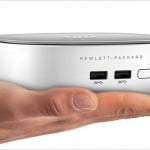
When the civilian Jeep debuted in 1945, it was presented as the ’40s version of the Swiss Army knife with four wheels. “Go anywhere, do anything” was the catchphrase. Follow that up with a look at the Willys-Overland Equipment book from the late ’40s and you’ll see the proof. Name the job and there was a Jeep accessory to help you do it. The 1948 Accessory book was 120 pages thick, and that’s only the factory-authorized equipment.
Among the many accessories listed for the CJ were front loaders. A number of them were made for Jeeps over the years, but there were two listed in the 1948 book: MAHL and Baldwin. Neither is well known today, but the MAHL garnered a lot of attention from collectors and historians because it appeared to be a high-quality, well-engineered unit. The problem is nobody left alive remembered ever seeing one, and some even doubted any had been built. That is until Glenn Byron stumbled across a MAHL in a New York wrecking yard in 2007.
Glenn is a well-known East Coast Jeep collector and historian, so he had a pretty good idea of what he found. After researching it, to his great surprise, he discovered the company that had built it remains in business. Still owned by the Demeules family, Standard Iron & Wire Works (std-iron.com) has been in business since 1930. According to Rich Demeules, now running the company, the idea began in 1946 when the four founding brothers—Heine, Rola, Zez, and Chuck—noticed the popularity of the postwar Jeep. They were looking for new products to manufacture and the idea of a loader for the Jeep came to the forefront, as well as a few other products.
Standard Iron had previously established the MAHL Corporation as a holding company for real estate. “MAHL” combined the first letters in the names of the Demeules brother’s wives, Martha, Ann, Helen, and Lucy. It was decided to put the new Jeep products under that name rather than Standard Iron. The loader prototype was built in 1947 and production began soon after. Its first appearance in the Jeep Equipment Catalog was in 1948, along with a MAHL sprayer (model RJ). The Model JA loader had a list price of $343 but didn’t include a bucket. Two buckets were available: a Snow & Produce ($81.50) or a Dirt & Gravel ($46.50). Accessories were a dozer blade ($58.25), V-Type snowplow ($120), and a stacker head ($225). Arm extensions were an option, as was an energy conversion valve.
 Equipped with the snow and produce bucket, the newly married MAHL Loader and ’48 CJ-2A was ready for work again. The serial number of this MAHL is 163 of approximately 300 built. The loader could lift 1,100 pounds as high as 9 feet. More if you installed the arm extensions. The dirt and gravel bucket was a little smaller and had teeth on the leading edge.
Equipped with the snow and produce bucket, the newly married MAHL Loader and ’48 CJ-2A was ready for work again. The serial number of this MAHL is 163 of approximately 300 built. The loader could lift 1,100 pounds as high as 9 feet. More if you installed the arm extensions. The dirt and gravel bucket was a little smaller and had teeth on the leading edge.The loader was rated for 1,100 pounds, and no doubt some of you are exclaiming: “Whoa! That’s way over what the frontend of a flatfender CJ can take.” You’re right, but the engineers at Standard Iron were way ahead of us. They built in hydraulically actuated overload wheels that operated off the main hydraulics. Attached to the main frame of the loader, it responded to the load and took most of the weight off the front of the Jeep. The framework also did a good job of equalizing the load to both ends of the Jeep.
Looking at the images and seeing the MAHL in operation shows it’s a well-designed accessory for its day. Standard Iron offered them for sale until 1953 and maintained a parts supply through 1960. Only about 300 were sold, and those low sales were directly related to the Jeep industrial accessory market as a whole. Generally speaking, purpose-built equipment did a better job than a converted Jeep, and these facts put the damper on many of the Jeep industrial accessories built during the frenzy of product debuts in the ’40s and early ’50s, including the MAHL loader.
 Hydraulic power came from a Gre-Sen Model KH hydraulic pump driven by the Jeep rear PTO, which is driven off the transfer case. The pivot point for the loader arms is attached to the rear chassis crossmember, one of the strongest parts of the Jeep chassis.
Hydraulic power came from a Gre-Sen Model KH hydraulic pump driven by the Jeep rear PTO, which is driven off the transfer case. The pivot point for the loader arms is attached to the rear chassis crossmember, one of the strongest parts of the Jeep chassis.Once Glenn discovered Standard Iron was still in business, he contacted them about the loader and got an excited response. It’s the only surviving loader anyone knows about, and it wasn’t long before Glenn and Rich made a deal for the loader, and then Glenn found a ’48 CJ to install it on. The loader went to the Standard Iron machine shop in late 2011 for restoration. Restoration of the ’48 CJ-2A began at nearly the same time, using Vescio’s Customizing in Rogers, Minnesota, for the body while the running gear was overhauled by Rich and Al Eiden.
By early 2016, the MAHL loader and the ’48 CJ had been formally married, and the couple made their first public appearance at the 2016 Willys Jeep Rally at Heuston Woods, Ohio (mw-willysjeep.com). If you want to see the MAHL in action, check out the video on the Jp Magazine website at jpmagazine.com.
 The overload wheels carried the majority of the load at the front of the Jeep. Not only do they steer in concert with the Jeep’s front wheels, they respond to the load in the bucket. The overload hydraulic cylinder was tied in to the bucket lift cylinder, so as the load and pressure increased on the lift cylinder, the overload cylinder responded by taking more of that load. With no load, the wheel had four inches of travel and free-floated over the ground. The entire loader, less the bucket, added 950 pounds to the Jeep. The MAHL literature claimed the loader brackets could be released easily by removing only three bolts, but that seems a little optimistic to us.
The overload wheels carried the majority of the load at the front of the Jeep. Not only do they steer in concert with the Jeep’s front wheels, they respond to the load in the bucket. The overload hydraulic cylinder was tied in to the bucket lift cylinder, so as the load and pressure increased on the lift cylinder, the overload cylinder responded by taking more of that load. With no load, the wheel had four inches of travel and free-floated over the ground. The entire loader, less the bucket, added 950 pounds to the Jeep. The MAHL literature claimed the loader brackets could be released easily by removing only three bolts, but that seems a little optimistic to us. Under the hood of the restored CJ, it’s standard ’48 fare. By ’48, the Go-Devil four had been improved in many ways from the WWII version, but it still made 60 hp net, which is about 54 gross. The powertrain was standard Jeep as well, three-speed Warner Gear T90, Model 18 Spicer transfer case, Spicer model 41-2 rear axle and Model 25 front, both with 5.38:1 cogs.
Under the hood of the restored CJ, it’s standard ’48 fare. By ’48, the Go-Devil four had been improved in many ways from the WWII version, but it still made 60 hp net, which is about 54 gross. The powertrain was standard Jeep as well, three-speed Warner Gear T90, Model 18 Spicer transfer case, Spicer model 41-2 rear axle and Model 25 front, both with 5.38:1 cogs. The few additions to the interior included an extra lever for the PTO to engage the hydraulic pump and the controls for the loader mounted between the seats. The yellow rope seen just outside the driver’s entry is the trip for the bucket dump latch.
The few additions to the interior included an extra lever for the PTO to engage the hydraulic pump and the controls for the loader mounted between the seats. The yellow rope seen just outside the driver’s entry is the trip for the bucket dump latch.










